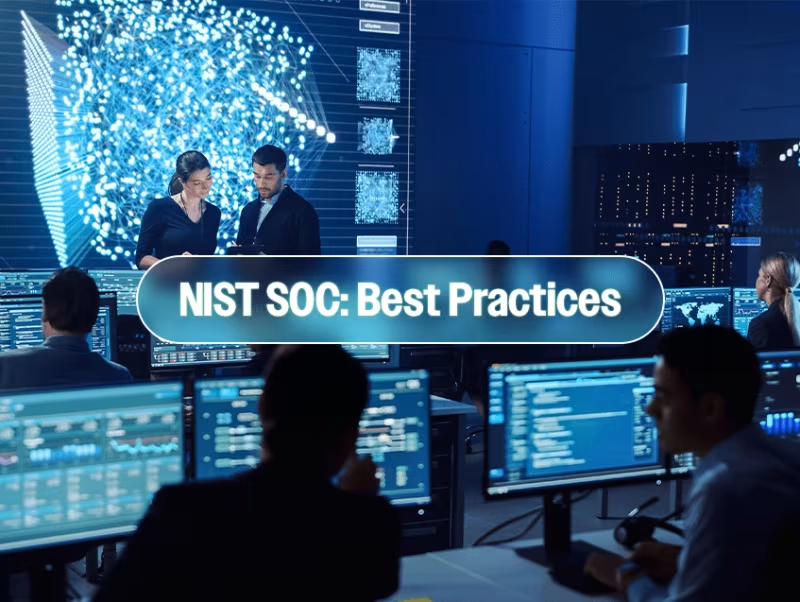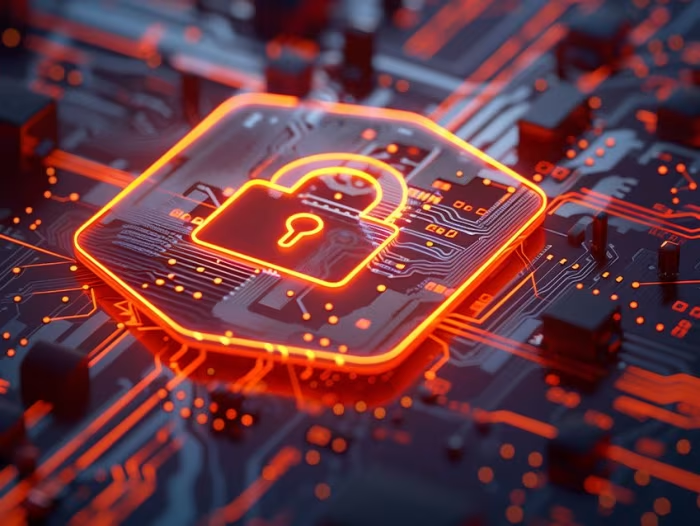Resource / Online Journal
Navigating NIST SOC: Best Practices for Effective Security Operations
NIST framework guidance can help your organization with forming a robust cybersecurity framework. NIST SOC guidelines also help you to enhance your organization's response to cyber threats.
Published on Sep 10, 2025

A Security Operations Center (SOC) is nothing but an organization's real-time defense against ever-evolving cybersecurity threats. It serves as a centralized unit responsible for continuously monitoring, detecting, responding to, and managing risks to protect any sensitive data.
Effective security operations rely on a combination of skilled cybersecurity professionals, robust processes, and advanced technologies to maintain a resilient security posture. The National Institute of Standards and Technology (NIST) SOC guidance offers guidance for security operations and risk management.
Understanding Cybersecurity Frameworks
Cybersecurity frameworks, such as the NIST Cybersecurity Framework (CSF), provide a systematic approach to identifying, managing, and mitigating cyber risks. It has five primary functions: Identify, Protect, Detect, Respond, and Recover.
The functions collectively guide organizations in establishing effective security controls and ensuring regulatory compliance. By employing these frameworks, organizations can gain clarity in prioritizing risks. It helps you align security investments with risk tolerance and business objectives.
NIST Framework Overview
The NIST CSF, a voluntary guidance, is aimed at helping organizations to enhance their security framework with a risk management approach. Flexible and scalable, the framework is applicable to organizations of all sizes and sectors.
It centers on protecting critical assets while balancing operational objectives with cybersecurity risk management. The five core functions frame a comprehensive security lifecycle model:
- Identifying cybersecurity risks
- Protecting assets through security controls
- Detecting security events
- Responding promptly to incidents and
- Recovering operations to normalcy.
Security Controls and NIST SOC
Organizational controls over security form the backbone of cybersecurity defenses against potential cyber threats. It encompasses mechanisms like access controls, intrusion detection systems, encryption, and multi-factor authentication. The NIST SOC framework provides specific guidance on deploying these controls effectively to prevent unauthorized access, ensure data security, and mitigate threats.
Proper implementation of security controls is crucial not only for safeguarding an organization's assets but also for meeting regulatory mandates and industry standards. Regular audits and assessments help maintain control and efficacy and adapt to emerging vulnerabilities.
Choosing the Right Framework
Selecting an appropriate cybersecurity framework involves evaluating organizational needs, regulatory obligations, and the risk landscape. Understanding the distinctions among frameworks enables informed decision-making.
TechDemocracy, one of the emerging Managed SOC service providers, ensures that the chosen framework aligns with the organization’s strategic goals, risk appetite, and legal constraints. A well-chosen framework sets the foundation for effective cybersecurity governance and operational effectiveness.
Implementing a Cybersecurity Framework
Implementation of a cybersecurity framework demands a methodical approach. It should incorporate risk identification, control deployment, continuous auditing, and regulatory compliance checks. NIST framework guidance assists organizations in integrating security objectives and measures.
Continuous monitoring and periodic improvement are vital to adapting to evolving threats and maintaining the relevance of security controls. Implementation plans often include staff training, process documentation, and leveraging automation operational controls for efficiency.
Risk Management and Incident Response
Risk management is central to maintaining a robust security posture, encompassing the identification, evaluation, and mitigation of cybersecurity threats. Incident response complements this by providing structured procedures to manage security events, minimize impact, and expedite recovery.
Guidance to the NIST SOC framework, seen in many guidelines, emphasizes the importance of a coordinated incident response plan. It is to manage downtime, data loss, and reputational damage.
Informative References and NIST Special Publications
NIST’s resources, such as Special Publication 800-53, offer in-depth guidelines on implementing security and privacy controls tailored for federal information systems but widely applicable across sectors. These publications act as authoritative references to understand and operationalize security best practices.
Alongside SP 800-53, other documents like SP 800-61 (Incident Handling Guide) and SP 800-137 (Continuous Monitoring) provide vital frameworks and methodologies to enhance security operations. Utilizing these references enables organizations to align operational practices with recognized standards and improves cybersecurity maturity.
Security Operations and NIST Cybersecurity Framework
Integrating the NIST CSF into security operations centers empowers organizations to adopt a proactive stance on cybersecurity. Continuous monitoring, threat detection, effective incident response, and risk management are critical components that the framework supports.
SOCs leveraging NIST guidance are better equipped to adapt to new threats and regulatory demands, ensuring sustained operational resilience. The structured approach offered by the NIST CSF helps organizations maintain compliance while optimizing resource allocation for security measures.
Continuous Monitoring and Improvement
A key tenet of maintaining a strong security posture is continuous monitoring, which involves ongoing assessment of security controls to verify their effectiveness. The NIST CSF advocates for persistent vigilance through automated tools and regular security assessments to detect anomalies and emerging threats promptly.
Improvement efforts based on monitoring insights allow organizations to refine controls, update policies, and address newly identified vulnerabilities. This cycle of monitoring and enhancement ensures that security defenses evolve in step with changing cybersecurity landscapes.
Conclusion
Implementing a cybersecurity framework like the NIST Cybersecurity Framework is imperative for organizations aiming to manage cybersecurity risks systematically and improve their overall security posture. A thorough understanding of cybersecurity frameworks, coupled with effective security controls and risk management practices, forms the foundation of resilient security operations.
Continuous monitoring is essential to adapt to dynamic cyber threats. By embracing NIST’s guidance, organizations can establish effective SOCs that safeguard critical assets, respond efficiently to incidents, and sustain business continuity in an increasingly complex threat environment.
Recommended articles


Benefits of the NIST Cybersecurity Framework for Startups
Take Your Identity Strategy
to the Next Level
Strengthen your organization's digital identity for a secure and worry-free tomorrow. Kickstart the journey with a complimentary consultation to explore personalized solutions.